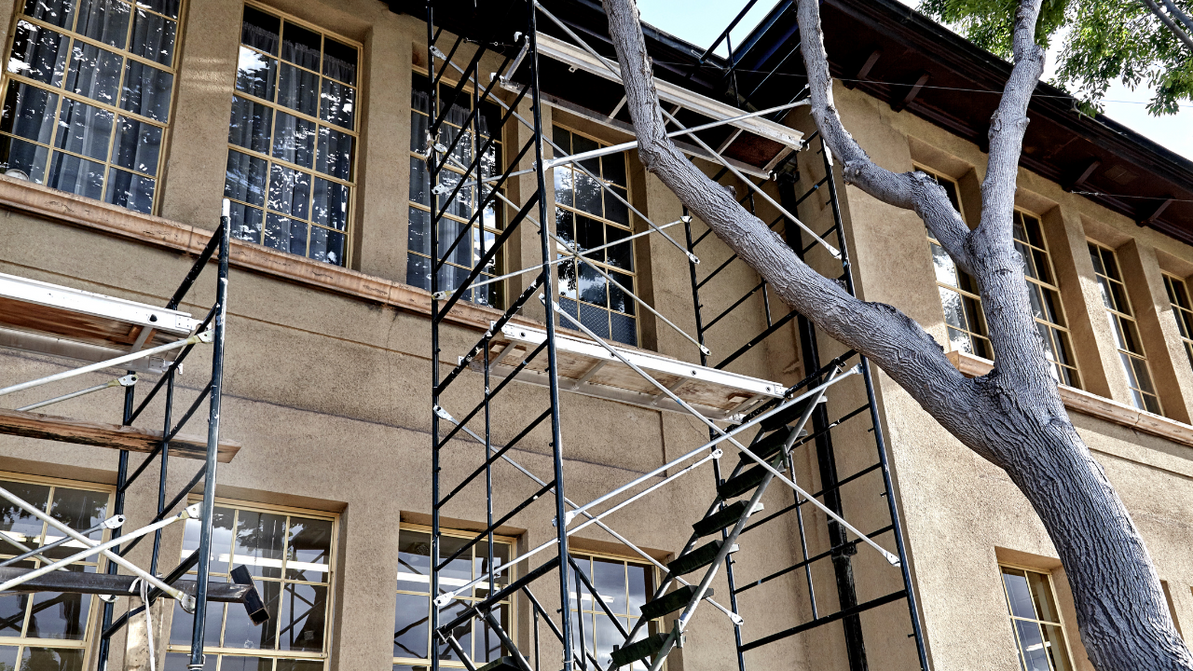The Role of Scaffolding in Historical Masonry Restoration
Restoring historical masonry structures is a delicate and complex process, requiring both technical expertise and an understanding of historical craftsmanship. One of the most critical components in this process is the use of scaffolding. While scaffolding may seem like a straightforward tool, it plays a significant role in ensuring the safety of workers and the preservation of the buildings themselves.
In this blog, we’ll explore the challenges of using scaffolding in historical masonry restoration and highlight some innovative solutions through examples of remarkable restoration projects.
Challenges of Scaffolding in Historical Masonry Restoration
- Preservation of Fragile Facades
Many historical buildings have aged facades that are fragile and easily damaged. Standard scaffolding setups may not provide adequate protection or stability, leading to potential damage to intricate masonry work. Additionally, improper anchoring of scaffolding can harm the building’s surface, causing irreversible harm to the very structure restoration is trying to preserve. - Limited Access to Complex Structures
Historical buildings often have unique architectural features—such as towers, turrets, or ornate carvings—that present accessibility issues. The irregular shapes of these structures can make it difficult to install scaffolding, as traditional scaffolding systems are designed for straight, modern facades. - Regulatory Compliance and Safety
Restoration projects on historical buildings often come with strict regulations to maintain historical authenticity. This can limit the types of scaffolding that can be used or where it can be placed. Simultaneously, worker safety must be prioritized, which can be a challenge when trying to balance historical preservation with modern safety standards. - Environmental Factors
Historical masonry buildings often endure harsh environmental conditions over time, such as weathering and erosion. Restoration projects must consider how scaffolding can be installed in ways that won’t exacerbate these vulnerabilities. Environmental concerns like wind and rain can also affect the stability of scaffolding and the safety of workers on-site.
Innovative Solutions for Scaffolding in Historical Restoration
- Customized Scaffolding Systems
One solution to the accessibility issue is the development of custom scaffolding systems. Modular scaffolding that can be adapted to irregular shapes and structures is an excellent way to ensure that all parts of a historical building are reachable. In many cases, laser mapping and 3D modeling are used to design scaffolding that fits the exact dimensions and intricacies of a building. - Non-Invasive Anchoring
To address concerns of damaging fragile surfaces, non-invasive scaffolding techniques are often employed. These methods include using tension-based support systems that do not rely on direct attachment to the masonry. This reduces the risk of damage and helps protect the building’s original material. - Lightweight Materials
Modern scaffolding systems often incorporate lightweight materials like aluminum, which are strong but don’t exert unnecessary pressure on the building. This reduces the stress on the structure and minimizes the risk of damage. - Integration of Lifting Technologies
To reach the highest points of towers and turrets, some restoration projects integrate hoists and cranes into their scaffolding systems. This allows for safer and more efficient movement of materials and personnel to areas that would otherwise be difficult to access.
Examples of Successful Historical Masonry Restoration Projects
- The Leaning Tower of Pisa, Italy
During its restoration, scaffolding had to be carefully designed to accommodate the tower’s famous tilt. Engineers used a complex network of modular scaffolding combined with tensioned cables to stabilize the structure while keeping the delicate masonry intact. - Notre-Dame Cathedral, France
After the devastating fire in 2019, the restoration of Notre-Dame required a highly specialized scaffolding system. Engineers used a mix of traditional scaffolding and cutting-edge technology to safely access the fragile structure and secure the remaining parts of the cathedral without causing further damage. - The Palace of Westminster, UK
The ongoing restoration of this iconic building in London has faced significant challenges, given its scale and architectural complexity. A custom scaffolding design, which includes integrated walkways and platforms, ensures that workers can access every part of the structure without compromising its historical integrity.
Conclusion
Scaffolding plays a crucial role in historical masonry restoration, helping workers access hard-to-reach areas while protecting the building’s integrity. However, these projects come with their own set of challenges. By using innovative solutions such as customized scaffolding, non-invasive techniques, and lightweight materials, restoration experts are ensuring that historical structures are preserved for future generations.
Whether it’s the Leaning Tower of Pisa or your local historic courthouse, the careful consideration of scaffolding is essential in maintaining the beauty and history of our architectural heritage.
Recent Posts
-
What’s Ahead for Construction in 2026 — What Every Contractor & Scaffolding Pros Needs to Know
As we head into 2026, the construction industry is at a pivotal moment — shaped by technology, labor …Dec 31st 2025 -
What Happens When Scaffolding Is Installed Incorrectly
Lessons Learned (Without Naming Names) Scaffolding is one of those things most people don’t think ab …Dec 31st 2025 -
Wrapping Up 2025: Scaffolding Safety, Trends, and Lessons Learned
As 2025 comes to a close, it’s a great time to reflect on what we’ve learned in the world of scaffol …Dec 29th 2025




